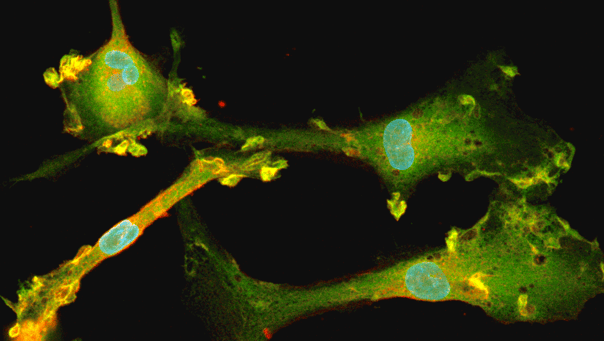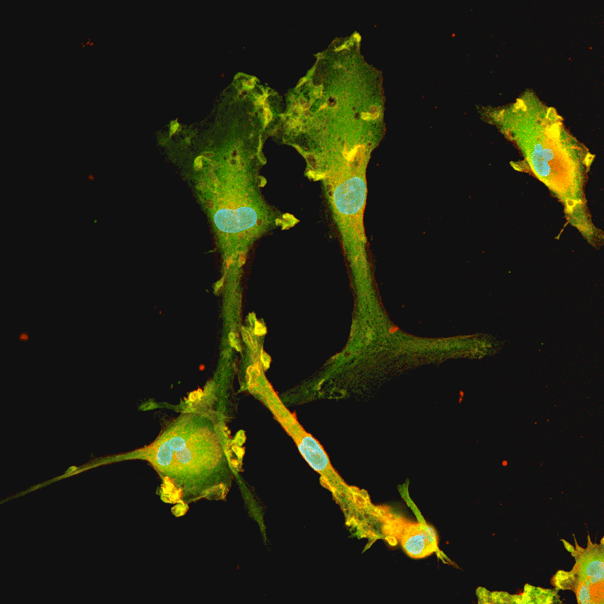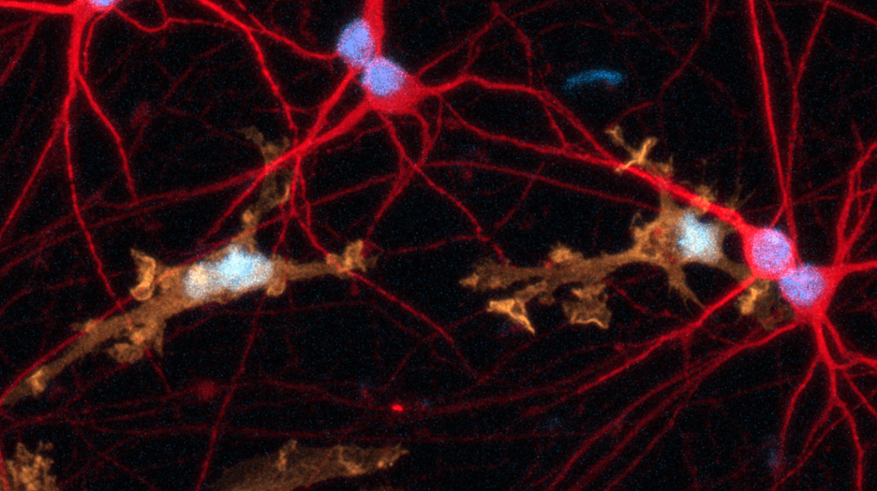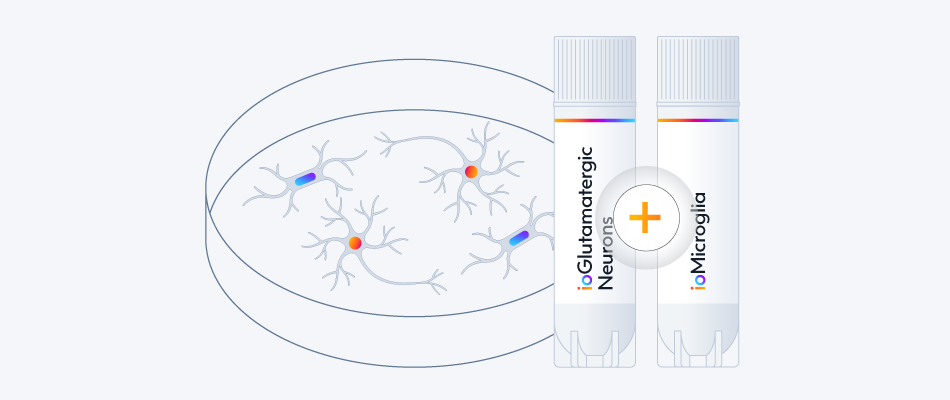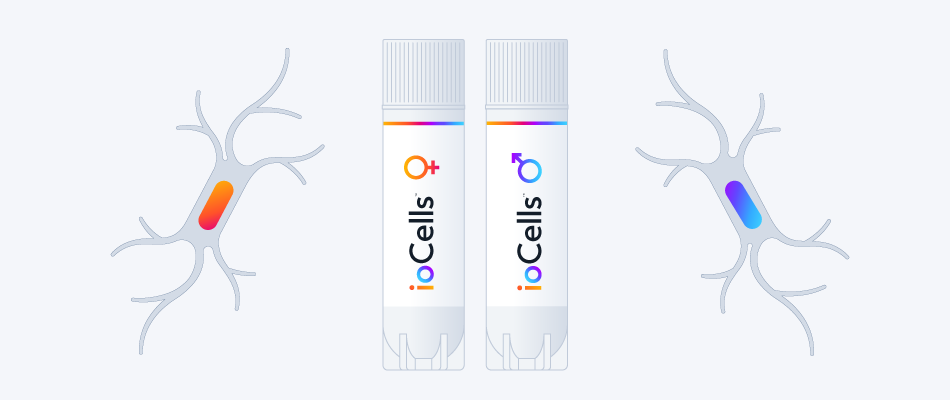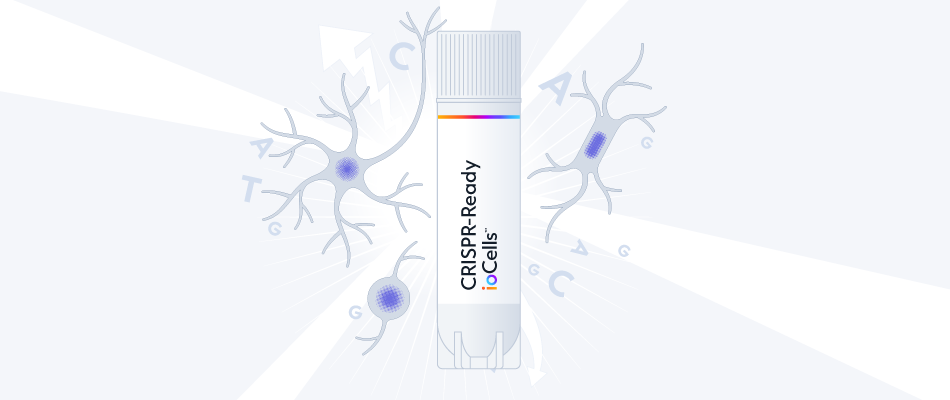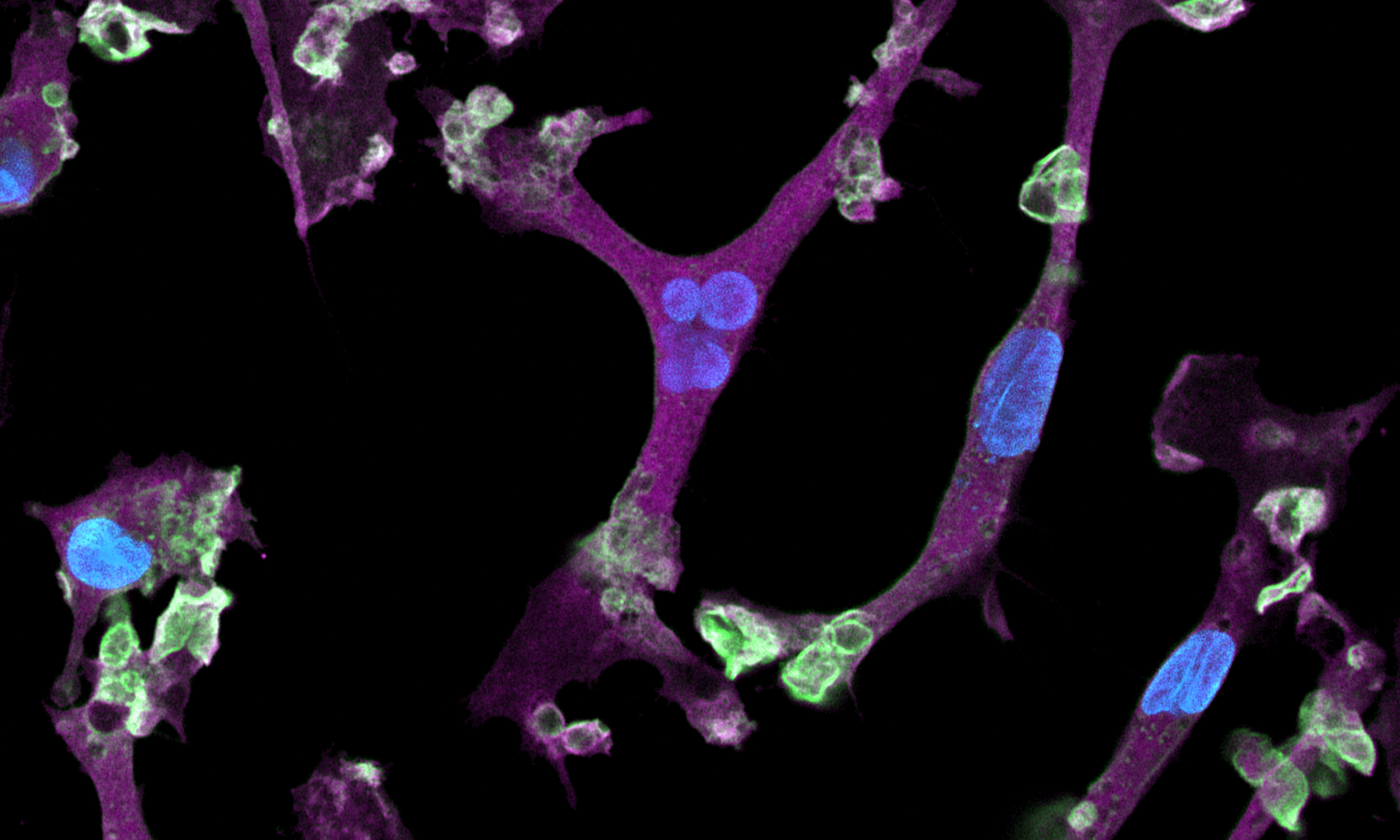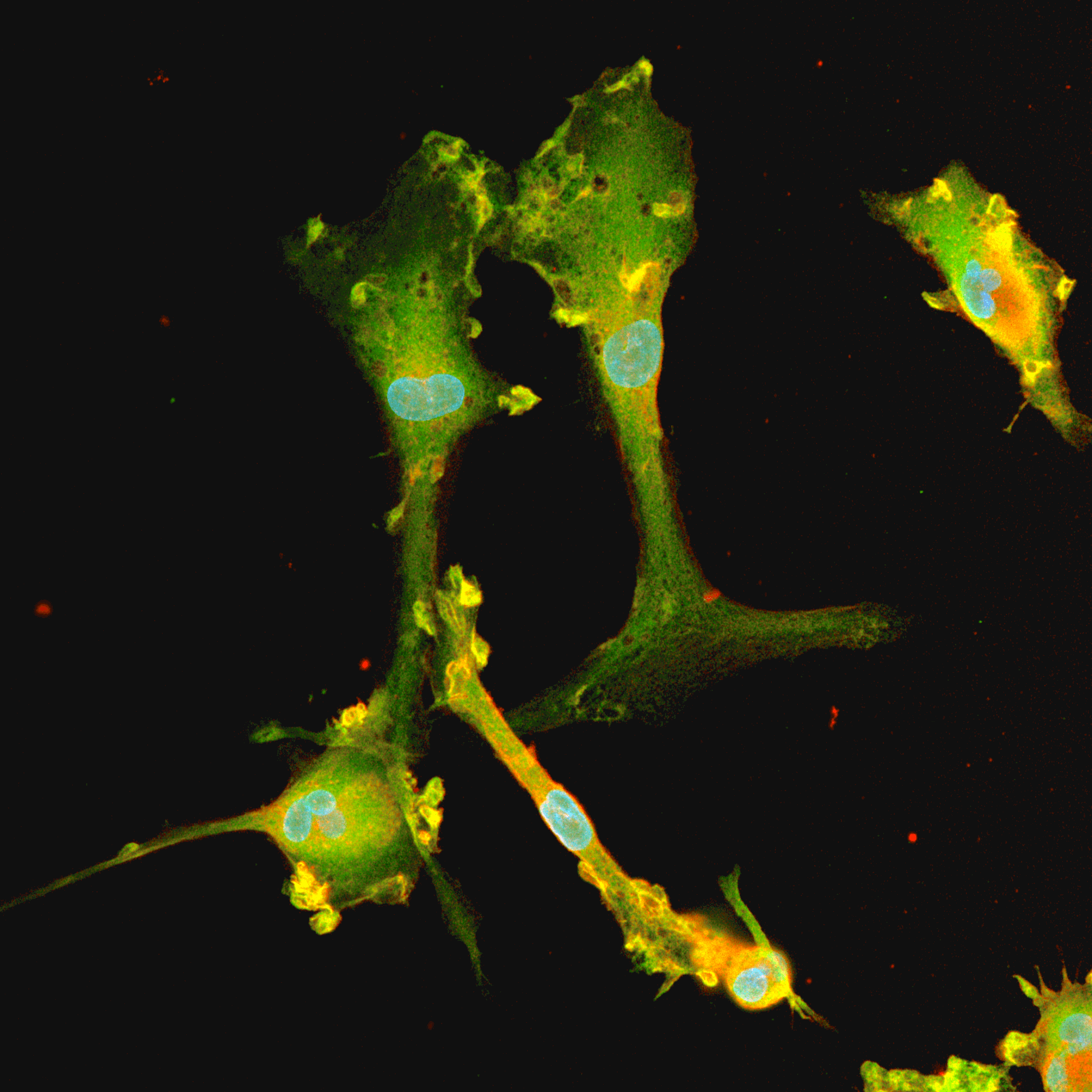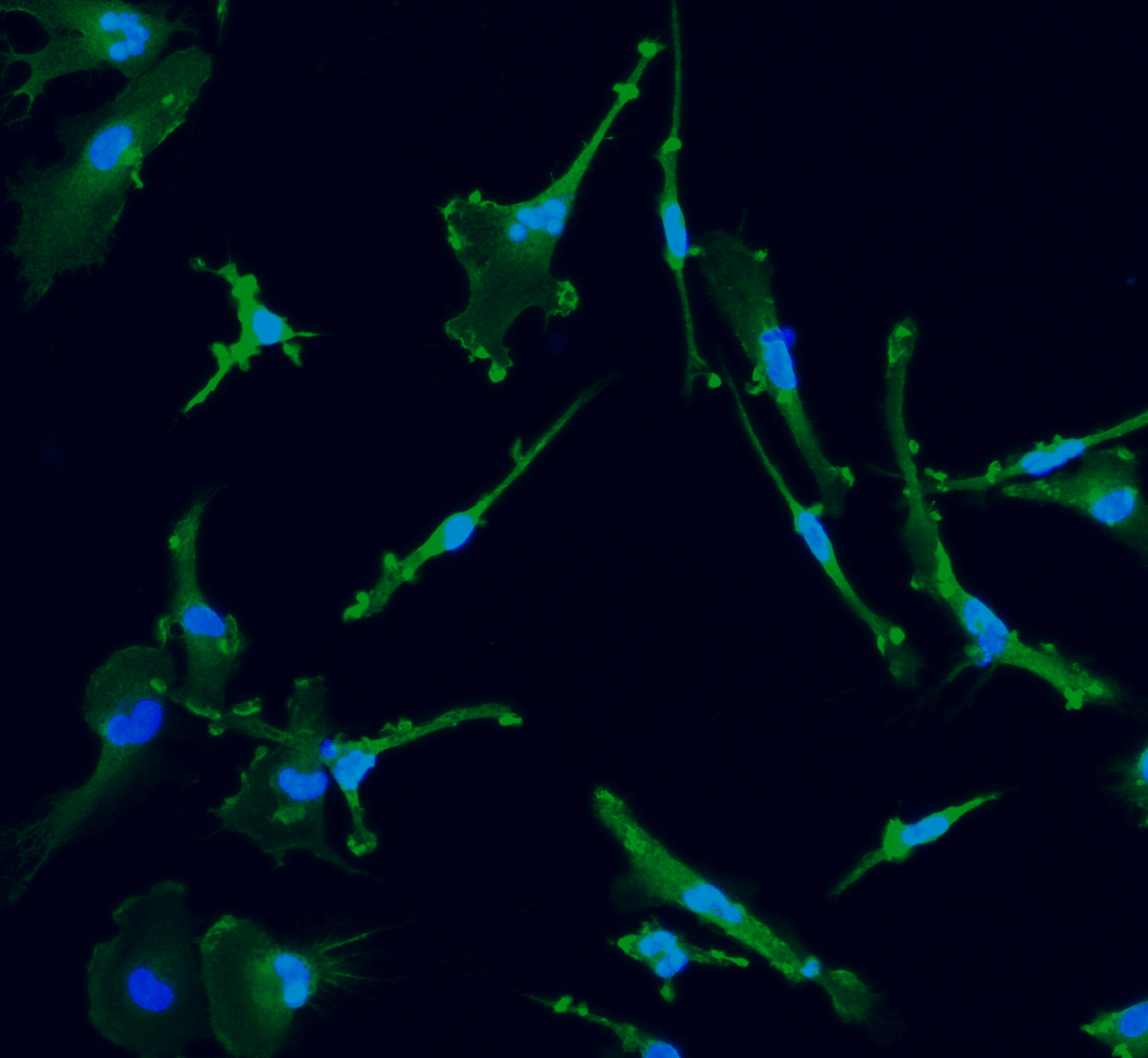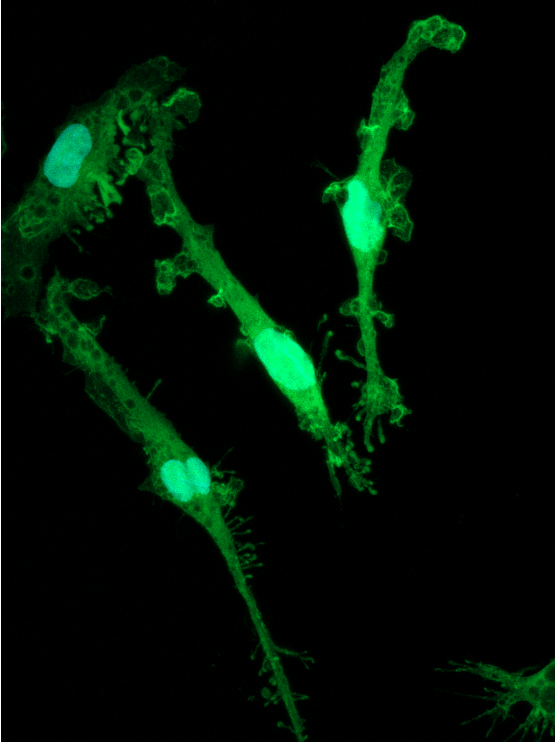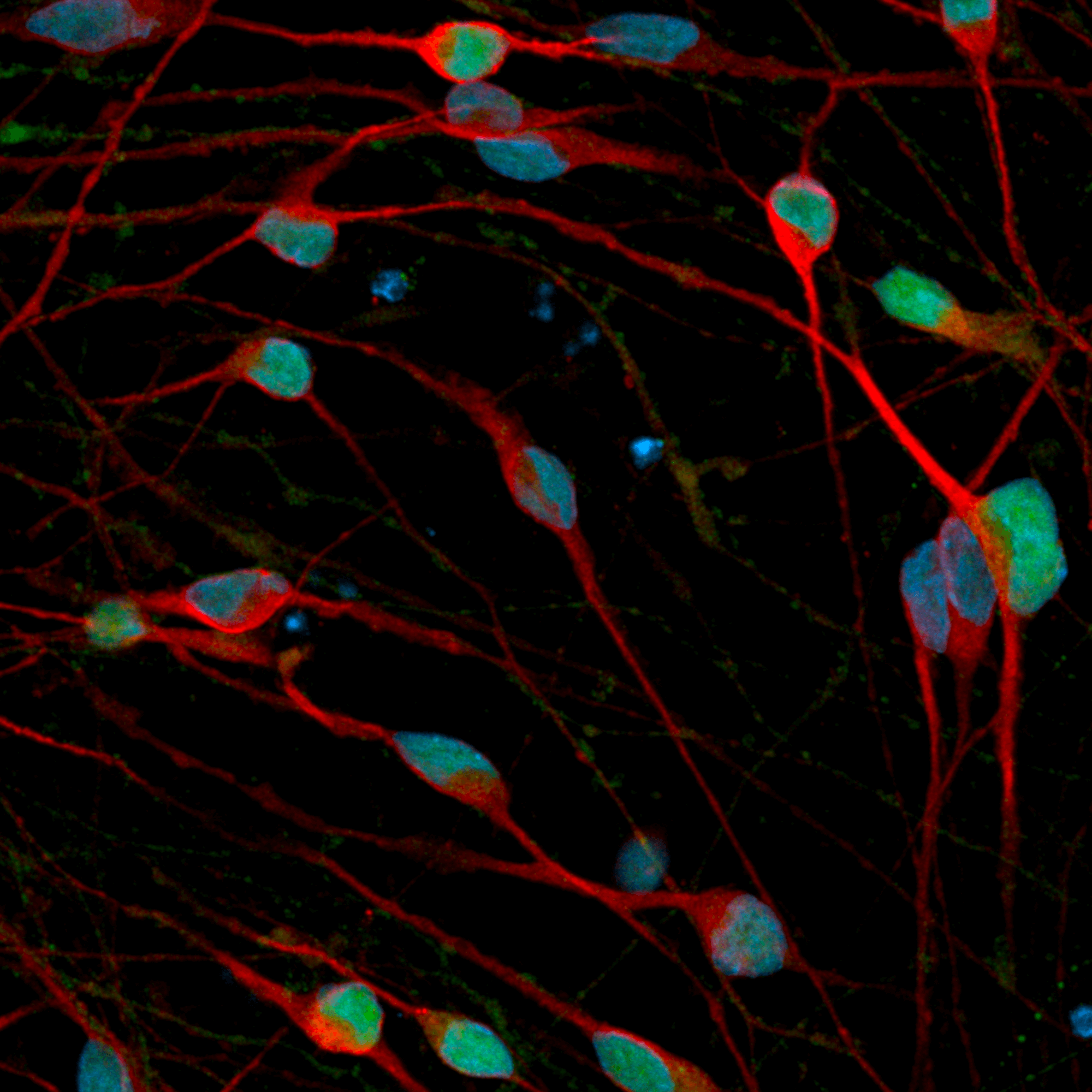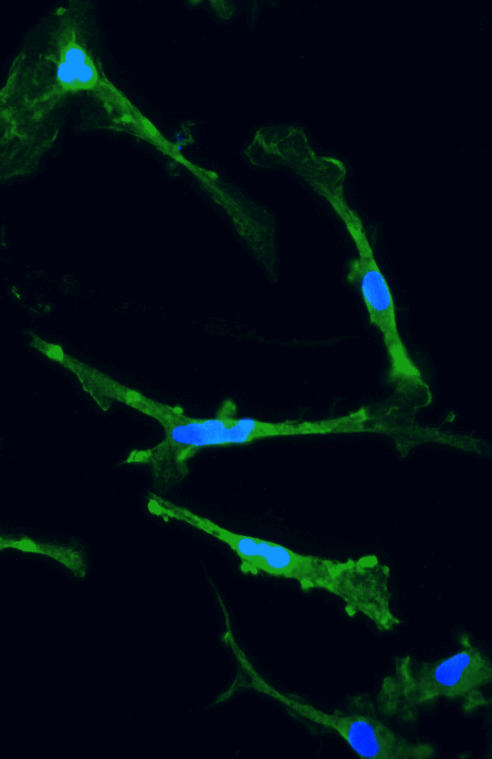















cat no | io1035
ioMicroglia TREM2 R47H/R47H
Human iPSC-derived Alzheimer's disease model
-
Cryopreserved human iPSC-derived cells powered by opti-ox, that are ready for experiments in days
-
Engineered to investigate the effect of the mutant TREM2 protein in Alzheimer's disease
-
Consistently perform key phagocytic and cytokine secretion functions, and are co-culture compatible

Human iPSC-derived microglia Alzheimer's disease model

Disease model cells secrete pro-inflammatory cytokines upon activation
Cytokine secretion was analysed at day 10 post-revival after stimulation with LPS 100 ng/ml and IFNɣ 20 ng/ml for 24 hours. This revealed that ioMicroglia TREM2 R47H/R47H disease model cells secrete the predominantly pro-inflammatory cytokines, IL-6, IL-8, IL-1β, and TNF⍺ at a similar level to the WT control. IL-12p70 appears to be secreted at a lower level, and Il-10 at a higher level than the WT control. Supernatants were harvested and analysed using MSD V-plex Proinflammatory Kit. Three technical replicates were performed experiment.

Disease model cells show a similar proportion of phagocytosis to the genetically matched wild-type control
Phagocytosis was analysed at day 10 post-revival after incubation with 1 µg/0.33 cm2 pHrodo RED labelled E. coli particles for 24 hours +/- cytochalasin D control. The graph displays the proportion of cells phagocytosing E. coli particles over 24 hours and shows that ioMicroglia TREM2 R47H/R47H disease model cells display a similar proportion of phagocytosis to the WT control. Images were acquired every 30 mins on the Incucyte® looking at red fluorescence and phase contrast. Three technical replicates were performed per experiment.

Disease model cells show a similar degree of phagocytosis of E. coli particles to the genetically matched wild-type control
Phagocytosis was analysed at day 10 post-revival after incubation with 1 µg/0.33 cm2 pHrodo RED labelled E. coli particles for 24 hours +/- cytochalasin D control. The graph displays the fluorescence intensity per cell displaying degree of phagocytosis per cell and shows that ioMicroglia TREM2 R47H/R47H disease model cells display a similar degree of phagocytosis per cell to the WT control. Images were acquired every 30 mins on the Incucyte® looking at red fluorescence and phase contrast. Three technical replicates were performed experiment.

Disease model cells express key microglia markers comparably to the genetically matched wild-type control
Immunofluorescent staining on day 10 post-revival demonstrates similar homogenous expression of microglia marker P2RY12 and ramified morphology in ioMicroglia TREM2 R47H/R47H disease model cells compared to the genetically matched wild-type (WT) control. 100X magnification.

Disease model cells express key microglia markers comparably to the genetically matched wild-type control
Immunofluorescent staining on day 10 post-revival demonstrates similar homogenous expression of microglia marker IBA1 and ramified morphology in ioMicroglia TREM2 R47H/R47H disease model cells compared to the genetically matched wild-type (WT) control. 100X magnification.

Disease model cells show expected ramified morphology by day 10
ioMicroglia TREM2 R47H/R47H disease model cells mature rapidly and key ramified morphology can be identified by day 4 and continues through to day 10, similarly to the WT control. Day 1 to 10 post-thawing; 100x magnification.
Female donor-derived ioMicroglia form co-cultures with ioGlutamatergic Neurons
ioGlutamatergic Neurons (io1001) were cultured to day 10 post-thaw. Female donor-derived ioMicroglia (io1029) cultured to either day 1 or day 10 post-thaw were added directly to day 10 ioGlutamatergic Neurons. The co-cultures were maintained for a further 6 days. Representative video showing that female donor-derived ioMicroglia form a stable co-culture with ioGlutamatergic Neurons. Live imaging was performed in 6.5-minute intervals over a time period of 3 hours and 31 minutes using the 3D Cell Explorer 96focus Nanolive Imaging system.
Vial limit exceeded
A maximum number of 20 vials applies. If you would like to order more than 20 vials, please contact us at orders@bit.bio.

